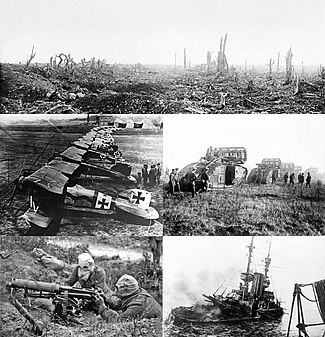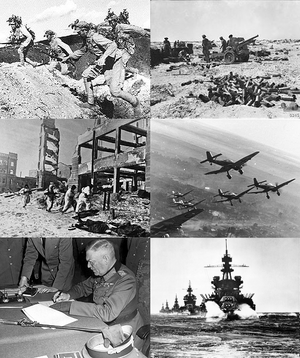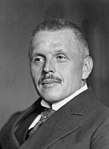User:Das Beta/sandbox
| |||||||||||||||||||||||||||||||||||||||||||||||||||||||||||||||||||||||||||||||||||||||||||||||||||||||||||||||||||||||
All 500 seats in the Reichstag 251 seats needed for a majority | |||||||||||||||||||||||||||||||||||||||||||||||||||||||||||||||||||||||||||||||||||||||||||||||||||||||||||||||||||||||
|---|---|---|---|---|---|---|---|---|---|---|---|---|---|---|---|---|---|---|---|---|---|---|---|---|---|---|---|---|---|---|---|---|---|---|---|---|---|---|---|---|---|---|---|---|---|---|---|---|---|---|---|---|---|---|---|---|---|---|---|---|---|---|---|---|---|---|---|---|---|---|---|---|---|---|---|---|---|---|---|---|---|---|---|---|---|---|---|---|---|---|---|---|---|---|---|---|---|---|---|---|---|---|---|---|---|---|---|---|---|---|---|---|---|---|---|---|---|---|---|
| Turnout | 84.5% | ||||||||||||||||||||||||||||||||||||||||||||||||||||||||||||||||||||||||||||||||||||||||||||||||||||||||||||||||||||||
| |||||||||||||||||||||||||||||||||||||||||||||||||||||||||||||||||||||||||||||||||||||||||||||||||||||||||||||||||||||||
| |||||||||||||||||||||||||||||||||||||||||||||||||||||||||||||||||||||||||||||||||||||||||||||||||||||||||||||||||||||||
| Siege of Moscow | |||||||
|---|---|---|---|---|---|---|---|
| Part of The Great War | |||||||
| |||||||
| Belligerents | |||||||
| United Germanian Reich | Russian Empire | ||||||
| Commanders and leaders | |||||||
| Leopold Brummy | Alexandr Surkov | ||||||
| World War I | |||||||
|---|---|---|---|---|---|---|---|
 Clockwise from the top: The aftermath of shelling during the Battle of the Somme, Mark V tanks cross the Hindenburg Line, HMS Irresistible sinks after hitting a mine in the Dardanelles, a British Vickers machine gun crew wears gas masks during the Battle of the Somme, Albatros D.III fighters of Jagdstaffel 11 | |||||||
| |||||||
| Belligerents | |||||||
|
Allied Powers
|
Central Powers | ||||||
| Commanders and leaders | |||||||
|
Allied leaders |
Central Powers leaders | ||||||
| Strength | |||||||
|
|
| ||||||
| Casualties and losses | |||||||
|
Military dead: 5,525,000 Military wounded: 12,831,500 Military missing: 4,121,000 Total: 22,477,500 KIA, WIA or MIA ...further details. |
Military dead: 4,386,000 Military wounded: 8,388,000 Military missing: 3,629,000 Total: 16,403,000 KIA, WIA or MIA ...further details. | ||||||
____________________________________________________________
| World War II | |||||||
|---|---|---|---|---|---|---|---|
 Clockwise from top left: Chinese forces in the Battle of Wanjialing, Australian 25-pounder guns during the First Battle of El Alamein, German Stuka dive bombers on the Eastern Front in December 1943, a US naval force in the Lingayen Gulf, Wilhelm Keitel signing the German Instrument of Surrender, Soviet troops in the Battle of Stalingrad | |||||||
| |||||||
| Participants | |||||||
| Triple Alliance | Entente | ||||||
| Commanders and leaders | |||||||
|
Main Allied leaders |
Main Axis leaders | ||||||
| Casualties and losses | |||||||
|
Military dead: 5,525,000 |
Military dead: 4,386,000 | ||||||
| World War II |
|---|
| Navigation |
|
|
Bernie Sanders | |
|---|---|
 Sanders in 2015 | |
| General secretary of the Central Committee of the Communist Party of the United States | |
| Assumed office 1 May 2017 | |
| Preceded by | Office established with earlier the role being himself as President of the United States |
| 45th President of the United States | |
| In office 9 November 2016 – 1 May 2017 | |
| Vice President | Hillary Clinton |
| Preceded by | Barack Obama |
| Succeeded by | Office abolished himself as General secretary of the Central Committee of the Communist Party of the United States |
| Chairman of the Supreme Soviet of the United States | |
| Assumed office 1 May 2015 | |
| Deputy | Elizabeth Warren |
| Preceded by | Office established |
| Chairman of the Senate Committee on Veterans' Affairs | |
| In office January 3, 2013 – January 3, 2015 | |
| Preceded by | Patty Murray |
| Succeeded by | Johnny Isakson |
| Member of the U.S. House of Representatives from Vermont's At-large district | |
| In office January 3, 1991 – January 3, 2007 | |
| Preceded by | Peter Smith |
| Succeeded by | Peter Welch |
| Mayor of Burlington | |
| In office April 6, 1981 – April 1989 | |
| Preceded by | Gordon Paquette |
| Succeeded by | Peter Clavelle |
| Full member of the 1st Politburo of the Communist Party of the United States | |
| Assumed office 22 April 2017 | |
| Personal details | |
| Born | Bernard Sanders September 8, 1941 Brooklyn, New York, U.S. |
| Political party | Communist Party of the United States
Democratic Party (2015-2017) Independent (2007-2015) |
| Other political affiliations | Liberty Union (1971–1979) Vermont Progressive (1999-2017) |
| Spouse(s) | Deborah Shiling (1964–1966) Jane (O'Meara) Driscoll (1988–present)[5] |
| Children | Levi (with Susan Mott) 3 stepchildren |
| Alma mater | University of Chicago |
| Signature | |
Cite error: There are <ref group=lower-alpha> tags or {{efn}} templates on this page, but the references will not show without a {{reflist|group=lower-alpha}} template or {{notelist}} template (see the help page).
- ^ "British Army statistics of the Great War". 1914-1918.net. Retrieved 13 December 2011.
- ^ Figures are for the British Empire
- ^ Figures are for Metropolitan France and its colonies
- ^ a b Tucker & Roberts 2005, p. 273
- ^ Greenhouse, Emily (May 12, 2015). "Getting to Know Jane Sanders, Wife of Bernie". Bloomberg.








